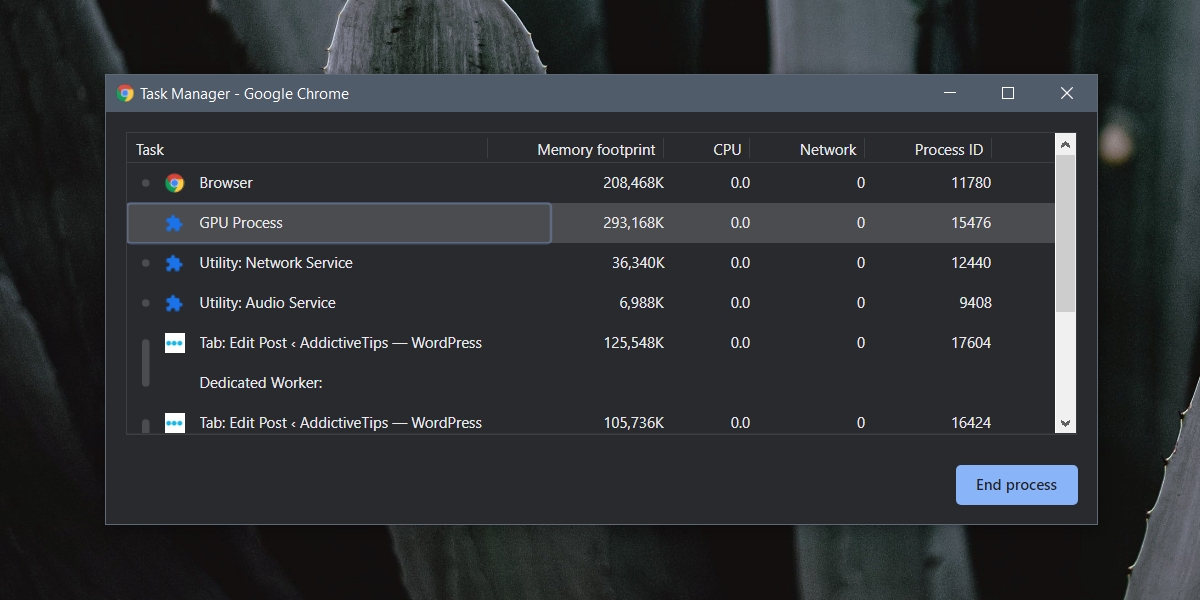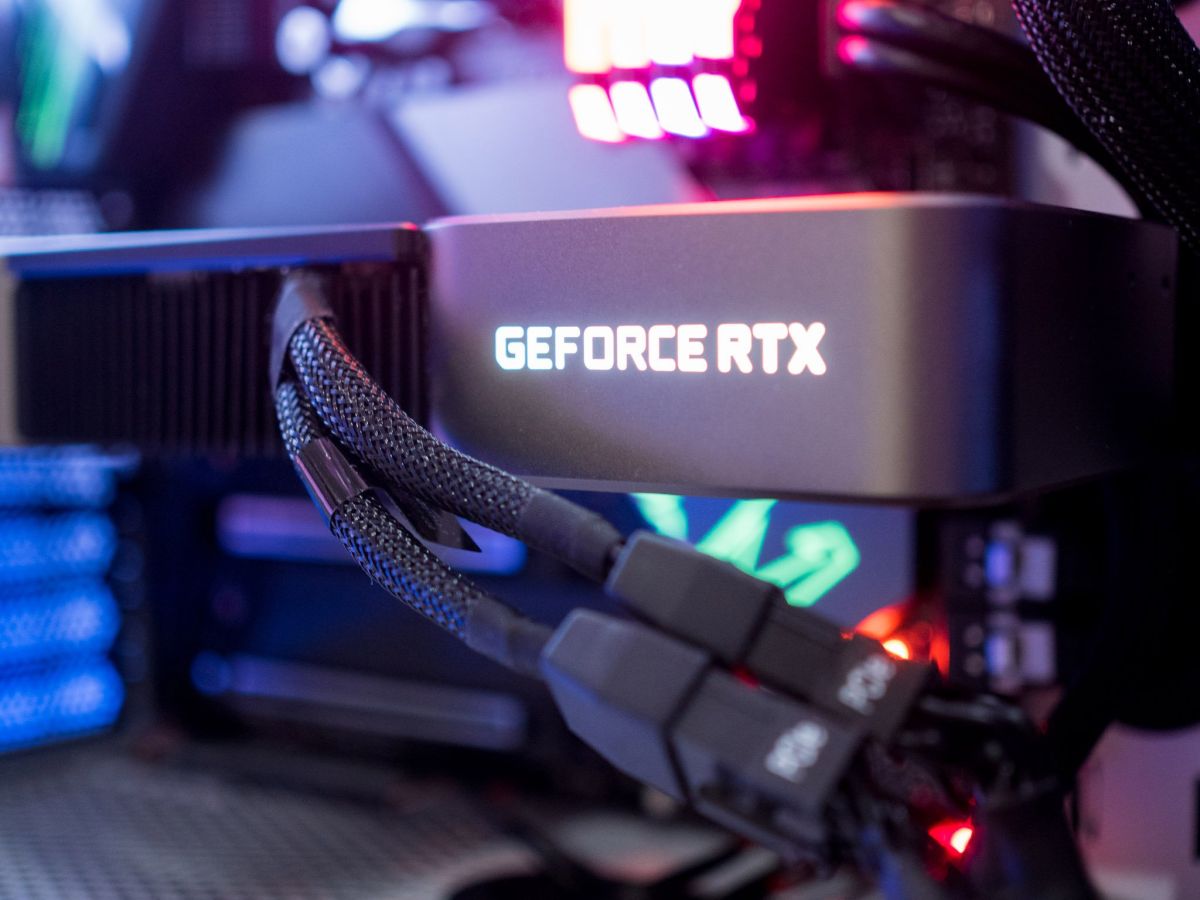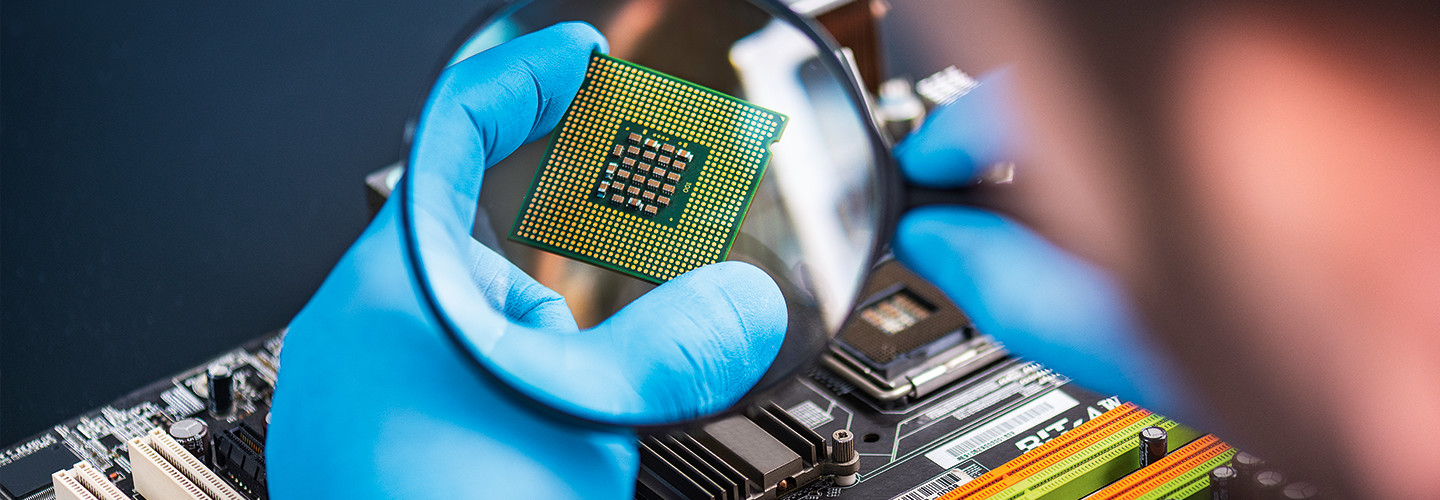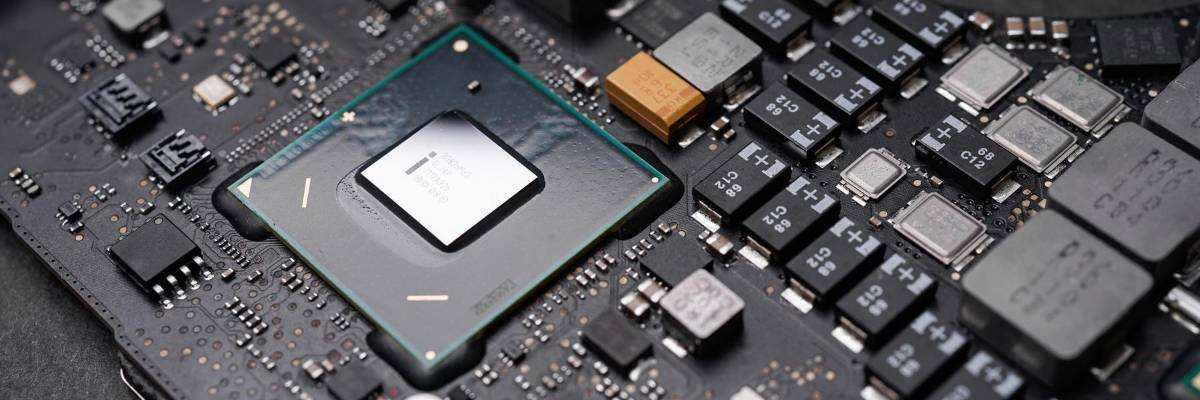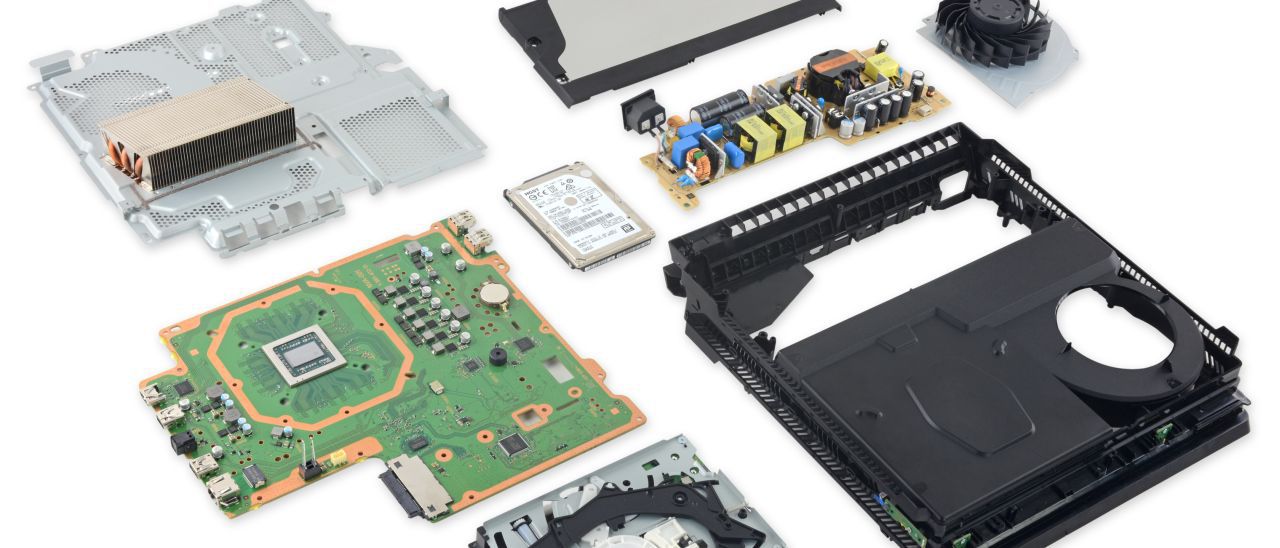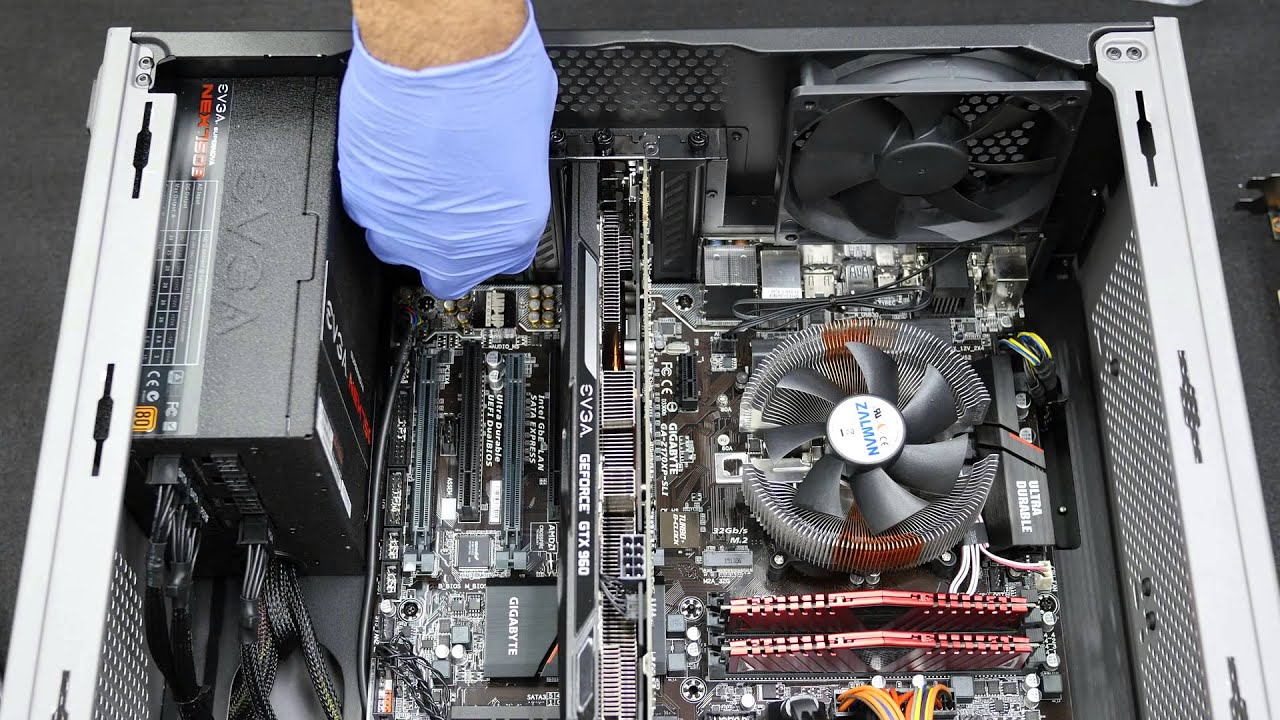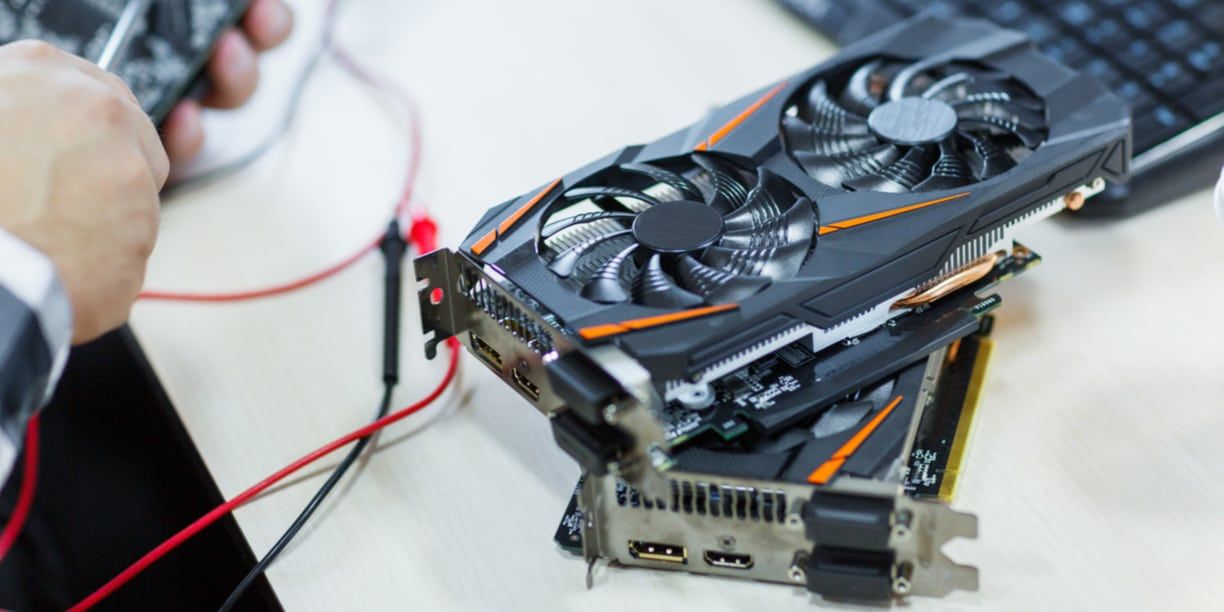Introduction
Graphics processing units, commonly known as GPUs, have become an integral part of modern computing systems. Originally designed to handle graphics-intensive tasks for video games and visual applications, GPUs have evolved into powerful processors capable of accelerating a wide range of compute-intensive tasks. This has led to their adoption in fields such as artificial intelligence, scientific research, data analysis, and more.
Understanding how GPUs work and their role in processing data is essential in appreciating their significance in today’s digital landscape. In this article, we will delve into the basics of GPU processing, explore their components, and highlight their applications. So, let’s dive in and unravel the mechanics behind GPUs.
Before we get into the technicalities, it’s important to note that GPUs and central processing units (CPUs) serve distinct purposes. While CPUs are general-purpose processors designed for handling a wide range of tasks, GPUs are specialized processors primarily focused on performing highly parallel computations.
So, what exactly is a GPU? A GPU is a specialized microchip that consists of thousands, and in some cases, even millions of smaller processing units known as cores. These cores work together in parallel, allowing the GPU to perform massive calculations simultaneously, significantly speeding up the processing time. While a CPU may have a few cores optimized for single-threaded tasks, a GPU leverages a large number of cores optimized for parallel processing.
The parallel processing capabilities of GPUs make them ideal for numerous applications that require significant computational power. From rendering lifelike graphics in video games to training complex machine learning models, the GPU’s ability to handle massive amounts of data concurrently enables it to excel in areas where traditional CPUs may fall short.
In the following sections, we will explore the inner workings of GPUs, including their components and how they process data. We will also compare GPU processing to CPU processing and examine some practical applications in which GPUs have made a significant impact.
What is a GPU?
A Graphics Processing Unit (GPU) is a specialized electronic circuit designed to handle and accelerate graphics processing tasks. Initially developed to render realistic graphics in video games and computer-generated imagery (CGI), GPUs have evolved into highly efficient processors capable of executing complex calculations in parallel.
Unlike the Central Processing Unit (CPU), which acts as the brain of a computer, a GPU is specifically designed for parallel processing, making it well-suited for computationally intensive tasks. GPUs are essential components in devices like gaming consoles, laptops, and high-performance computing systems.
Modern GPUs are incredibly powerful, with thousands, and sometimes millions, of small processing units called cores. These cores work together to execute multiple tasks simultaneously, significantly increasing computational efficiency. While a CPU may have a handful of cores optimized for sequential operations, a GPU’s vast number of cores, optimized for parallel operations, enables it to process data at a much faster rate.
GPUs are primarily used for graphics-intensive tasks such as rendering 3D graphics, image and video editing, and virtual reality applications. They excel at handling large datasets and performing complex mathematical calculations needed for tasks like ray tracing, physics simulations, and machine learning.
The demand for GPU processing power has skyrocketed in recent years, driven by advancements in computer graphics, machine learning algorithms, and data-intensive applications. This has led to the development of specialized GPUs like NVIDIA’s GeForce and Tesla series, AMD’s Radeon series, and Intel’s Xe architecture, each catering to different use cases and performance requirements.
It’s worth mentioning that GPUs can be integrated into systems in two ways: as discrete GPUs or integrated GPUs. Discrete GPUs, typically found in high-end gaming PCs and workstations, are separate cards installed in a computer’s PCIe slot. On the other hand, integrated GPUs are embedded within the CPU, providing basic graphical capabilities for everyday tasks. While integrated GPUs may not match the power of discrete GPUs, they still offer ample performance for common applications like web browsing and video playback.
In summary, a GPU is a specialized processor designed for parallel processing, making it perfect for graphics-intensive tasks and computationally demanding operations. With their massive number of cores and high processing power, GPUs not only revolutionized the gaming industry but also became indispensable tools for diverse areas such as scientific research, artificial intelligence, and cryptocurrency mining.
How Does a GPU Work?
Understanding how a GPU works requires a basic understanding of its architecture and the fundamental principles behind parallel computing. Let’s explore the key components of a GPU and how they work together to process data efficiently.
The architecture of a GPU consists of multiple components, including the control unit, memory, cache, and arithmetic logic units (ALUs). The control unit acts as the central coordinator, managing the flow of data and instructions between different components. It ensures that instructions are executed in the correct sequence and activates the ALUs to perform calculations.
Memory plays a vital role in a GPU’s operation. It consists of different types, such as VRAM (Video RAM) and GPU cache. VRAM stores the data and instructions required for rendering graphics and other computations. GPU cache, on the other hand, acts as a temporary storage area for frequently accessed data, reducing the need to fetch data from the slower VRAM or system memory.
The heart of a GPU lies in its ALUs, also known as shader cores. ALUs are responsible for executing the calculations required for processing graphics and other computational tasks. In a GPU, these ALUs are divided into groups called shader clusters or streaming multiprocessors (SM). Each SM contains a collection of ALUs that can execute instructions independently and in parallel, allowing for massive parallel processing.
In a typical workflow, the CPU sends data and instructions to the GPU through a bus interface. The GPU then processes the data in parallel by distributing it to the shader cores within the SMs. Each shader core performs the necessary calculations on a small portion of the data simultaneously, greatly accelerating the overall processing speed.
To improve efficiency, GPUs use a technique called pipelining. Pipelining allows multiple instructions to be executed simultaneously by breaking them down into smaller steps and overlapping the execution. This ensures that the ALUs are always busy and can process instructions continuously, maximizing throughput.
GPUs also employ a technique called rasterization, which converts geometric shapes into pixels to be displayed on a screen. This process involves determining which pixels should be filled and what color they should be, based on the shapes and textures defined in the input data. The rasterization stage is crucial in rendering detailed and realistic graphics.
Overall, GPUs achieve their high processing power through the combined efforts of parallelism, pipelining, and specialized hardware components. The massive number of shader cores, efficient memory management, and dedicated control units enable GPUs to handle complex computations, making them indispensable tools for a wide range of applications.
Components of a GPU
A Graphics Processing Unit (GPU) comprises several key components that work together to deliver high-performance graphics processing and parallel computing capabilities. Understanding these components is essential in comprehending the inner workings of a GPU. Let’s explore the main components of a GPU.
1. Control Unit: The control unit serves as the brain of the GPU, directing the flow of data and instructions between different components. It ensures that instructions are executed in the correct order and manages the overall operation of the GPU.
2. Memory: Memory plays a crucial role in a GPU’s performance. It consists of various types, including Video Random-Access Memory (VRAM) and cache. VRAM stores the data and instructions required for rendering graphics, while cache acts as a temporary storage area for frequently accessed data, reducing the need to fetch data from slower memory sources.
3. Arithmetic Logic Units (ALUs): ALUs, also known as shader cores, are responsible for executing the calculations required for processing graphics and other computational tasks. A GPU contains numerous ALUs organized into groups called shader clusters or streaming multiprocessors (SMs).
4. Texture Units: Texture units handle the mapping of textures onto 3D objects. They perform texture filtering, sampling, and blending operations, ensuring that textures appear smooth and realistic when applied to objects in a 3D scene.
5. Rasterizers: Rasterizers convert geometric shapes, defined in input data, into pixels that can be displayed on a screen. These specialized components determine which pixels should be filled and what colors they should be based on the input data. Rasterization is a critical stage in rendering detailed and lifelike graphics.
6. Bus Interface: The bus interface enables communication between the GPU and other components in the system, such as the CPU and system memory. It ensures the seamless transfer of data and instructions to and from the GPU.
These components work together harmoniously to deliver the exceptional performance that GPUs are known for. The control unit manages the flow of data, while the ALUs execute calculations in parallel, taking advantage of the massive number of cores available. The memory subsystems provide high-speed access to data and instructions, optimizing the overall processing efficiency.
It’s important to note that the specific components and their configurations may vary across different GPU models and manufacturers. Each GPU is designed with a specific target audience and use case in mind, which determines the allocation of resources and the balance between different components.
In the next section, we will explore how a GPU processes data and differentiate it from the processing capabilities of a Central Processing Unit (CPU).
How Does a GPU Process Data?
Graphics Processing Units (GPUs) excel at processing and handling massive amounts of data simultaneously, thanks to their parallel computing architecture. Let’s delve into how GPUs process data and distinguish their capabilities from those of a Central Processing Unit (CPU).
GPUs perform data processing through a technique called parallelism. Unlike CPUs, which are optimized for sequential processing, GPUs are designed to execute multiple tasks simultaneously. This is achieved through the use of thousands or even millions of smaller processing units called cores.
When it comes to data processing, GPUs shine in scenarios that involve highly parallelizable workloads such as graphics rendering, computer vision, and machine learning. These tasks typically involve repetitive calculations or operations applied to a large dataset.
Parallel processing in GPUs works by breaking down data-intensive tasks into smaller units of work and distributing them across the vast number of cores available. Each core operates independently, executing the same instructions on different portions of the data without the need for explicit coordination.
As a result, GPUs can process thousands or even millions of data points simultaneously, significantly accelerating the computation time compared to a CPU. This parallelism is especially beneficial for applications that require real-time responsiveness or involve complex mathematical operations.
To leverage the parallel computing power of GPUs effectively, the data must be divided into smaller batches or organized in a way that allows for parallel computations. This requires utilizing specialized programming paradigms, such as CUDA or OpenCL, which provide the necessary abstractions and tools to facilitate parallel processing on GPUs.
Moreover, GPUs have specialized memory structures to optimize data access and transfer. They feature high-speed Video Random-Access Memory (VRAM), which provides quick access to the data required for processing. Additionally, GPUs employ different levels of caches, such as global memory and shared memory, to minimize data latency and facilitate data sharing between cores.
It’s worth noting that while GPUs excel at parallel processing, there are certain tasks where CPUs are more suitable. CPUs are designed for general-purpose computing and perform well for tasks that require complex decision-making, sequential processing, and efficient memory management.
When it comes to determining whether to offload computations to a GPU or keep them on a CPU, it is essential to analyze the nature of the workload and identify whether it can benefit from parallel processing. In many cases, a hybrid approach that utilizes both CPU and GPU processing power can lead to optimal performance.
In the following section, we will explore the differences between GPU processing and CPU processing and discuss the applications where GPU processing shines.
GPU Processing vs. CPU Processing
Graphics Processing Units (GPUs) and Central Processing Units (CPUs) are both integral components of a computer system, but they have different strengths and are optimized for different types of tasks. Let’s compare GPU processing and CPU processing to understand their differences and when to utilize each.
Parallelism: GPUs excel at parallel processing, with thousands or even millions of cores capable of executing tasks simultaneously. This makes them highly efficient for computationally intensive workloads that can be divided into smaller independent tasks. On the other hand, CPUs are designed for sequential processing, focusing on fewer cores with higher clock speeds and stronger single-threaded performance.
Specialization: GPUs are optimized for handling graphics-intensive tasks, such as rendering 3D graphics, simulations, and image processing. They are specifically designed to perform large amounts of calculations in parallel, making them ideal for tasks like machine learning, data visualization, and video editing. CPUs, on the other hand, are general-purpose processors that can handle a wide range of tasks efficiently. They excel at tasks that require complex decision-making, resource management, and multitasking.
Memory and Cache: GPUs have specialized high-speed memory, such as Video RAM (VRAM), which provides quick access to data required for processing. They also utilize various levels of cache to minimize data latency and promote data sharing between cores. CPUs have smaller but faster caches that are tightly integrated with the cores. They rely more heavily on system memory and use complex cache hierarchies to optimize data access.
Energy Efficiency: GPUs are designed to maximize performance per watt, making them highly efficient for tasks that require massive parallel processing. They can handle large workloads while consuming relatively less power compared to CPUs. CPUs, on the other hand, prioritize single-threaded performance and versatile performance across a wide variety of tasks, often consuming more power for a given workload.
Flexibility: CPUs offer more flexibility and versatility due to their general-purpose design. They can handle a wide range of tasks, including single-threaded and multi-threaded workloads. CPUs can also multitask efficiently, allowing them to handle multiple software programs simultaneously. GPUs, while extremely powerful for parallel processing tasks, are more tailored for specific workloads and may require specific programming models to harness their full potential.
Memory Footprint: GPUs have a larger memory footprint, primarily due to the need to store and process large amounts of data in parallel. CPUs, by comparison, can operate efficiently with smaller memory footprints, making them well-suited for tasks with lower memory requirements or constrained environments.
In summary, CPUs and GPUs have distinctive characteristics that make them suitable for different types of tasks. CPUs provide versatility and are well-suited for tasks that require complex decision-making, single-threaded performance, and multitasking. GPUs shine when it comes to parallel processing, making them ideal for graphics-intensive tasks, machine learning, and data-intensive computations.
In the next section, we will explore some of the practical applications where GPU processing has made a significant impact, further showcasing the power and versatility of GPUs in various domains.
Applications of GPU Processing
Graphics Processing Units (GPUs) have revolutionized various industries and applications, enabling significant advancements in fields that require extensive computational power. Let’s explore some of the practical applications where GPU processing has made a significant impact.
1. Gaming: GPUs have been instrumental in the gaming industry, powering realistic and immersive gaming experiences. High-performance GPUs render complex 3D graphics, handle physics simulations, and support real-time ray tracing for more lifelike lighting and reflections.
2. Deep Learning and AI: The parallel processing capabilities of GPUs have been instrumental in advancing the field of artificial intelligence (AI). GPUs are the backbone of deep learning models, enabling efficient training and inference tasks. They speed up tasks like image recognition, natural language processing, and speech synthesis by performing large-scale matrix computations in parallel.
3. Scientific Research: GPUs have significantly impacted scientific research by accelerating computational simulations and data analysis. From simulating climate models to studying molecular structures, GPUs provide researchers with the computational power needed for complex simulations, reducing the time required for analysis and enabling faster scientific discoveries.
4. Cryptocurrency Mining: Many cryptocurrencies, such as Bitcoin, use algorithms that are computationally intensive to mine. GPUs are well-suited for these tasks due to their parallel processing capabilities. Crypto miners utilize multiple GPUs to solve complex mathematical algorithms, increasing their chances of earning cryptocurrency rewards.
5. Video and Image Editing: Handling high-resolution videos and graphics requires significant computational power. GPUs enhance video and image editing software by enabling real-time rendering, fast processing of effects and filters, and smooth playback of high-definition content.
6. Medical Imaging: Medical imaging techniques, such as MRI, CT scans, and ultrasound, generate large amounts of data that need to be processed and analyzed in real-time. GPUs aid in quick analysis and reconstruction of medical images, enabling faster diagnosis and treatment planning.
7. Financial Modeling and Simulation: GPUs are increasingly being used in financial institutions for high-frequency trading, risk analysis, and complex financial modeling and simulations. GPUs can process large datasets quickly, enabling traders and analysts to make informed decisions based on real-time market conditions and complex financial models.
8. Virtual Reality (VR) and Augmented Reality (AR): GPUs play a critical role in delivering immersive VR and AR experiences. Real-time rendering, image processing, and complex simulations in virtual worlds heavily rely on the parallel processing power of GPUs, ensuring smooth and realistic interactions.
These are just a few examples of the diverse range of applications where GPU processing has made a significant impact. As technology continues to advance, the potential uses for GPUs are expanding, enabling further innovations across industries.
In the next section, we will conclude our exploration of GPUs by summarizing the role they play in modern computing and their significance in powering various applications.
Conclusion
Graphics Processing Units (GPUs) have become indispensable in modern computing, driving advancements in various industries and applications. With their parallel processing architecture, specialized cores, and efficient memory management, GPUs offer the computational power needed for graphics rendering, machine learning, scientific research, and more.
Through this article, we have explored the fundamentals of GPU processing, including their components, data processing mechanisms, and the differences between GPU and CPU processing. We have seen how GPUs excel in parallel computing, handling graphics-intensive tasks, and accelerating computationally intensive workloads.
From gaming to deep learning, GPUs have revolutionized industries and opened up new possibilities for innovation. They enable realistic graphics in video games, power complex deep learning models, accelerate scientific simulations, and aid in medical imaging analysis.
It’s important to recognize that while GPUs excel in certain areas, CPUs provide versatility and handle a wide range of tasks efficiently. Both GPUs and CPUs have their unique strengths, and understanding their respective capabilities allows for strategic utilization in different scenarios.
As technology continues to advance, we can expect GPUs to become even more powerful and find applications in new domains. The demand for GPU processing is only set to grow as industries continue to rely on computationally intensive tasks and the need for real-time responsiveness increases.
In conclusion, GPUs have transformed computing, enabling groundbreaking developments in graphics, artificial intelligence, scientific research, and more. Their parallel processing capabilities and specialization make them invaluable tools for accelerating complex computations and driving innovation in diverse fields.







